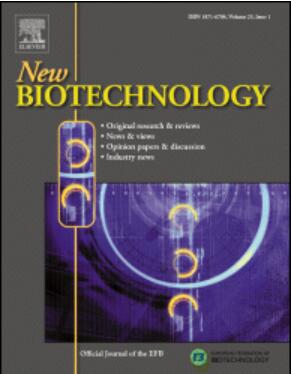在动物生产中具有益生菌和生物技术潜力的产菌素乳酸菌的表型和基因组特征
IF 4.9
2区 生物学
Q1 BIOCHEMICAL RESEARCH METHODS
引用次数: 0
摘要
耐抗生素病原体的出现引起了家禽业的极大关注,促使人们寻找抗生素的替代品,作为动物饲料中的生长促进剂。益生菌,特别是属于乳酸菌(LAB)组的益生菌,代表了一种有希望的解决方案,可以减轻传染病的风险。然而,由于生长动力学的变化,统一浓度的益生菌乳酸菌不适合作为饲料添加剂。此外,必须彻底评估所涉及的LAB菌株的基因组和生理特征。在本研究中,我们提供了一个分析框架来全面评估乳酸菌作为家禽养殖中潜在的抗生素替代品。对3株乳酸菌——从玉米青贮中分离得到的五囊Pediococcus pentosaceus、从家禽肠道中分离得到的liilactobacillus salivarius和从虹鳟鱼肠道中分离得到的乳酸乳球菌Lactococcus lactis进行了测序和鉴定,并在基因组水平上评价了它们的益生菌潜力和安全性。分析包括与病原体共培养LAB,评估活细胞,并确定细菌素样抑制物质(BLIS)的最低抑制浓度。结果显示,除了对禽类病原菌(沙门氏菌、梭状芽胞杆菌和大肠弯曲杆菌)具有有效的抑菌活性外,三种乳酸菌均具有显著的益生菌特性,如对胆盐和酸性环境的耐受性以及对肠细胞的粘附性。总之,我们的分析框架和结果突出了所测试的LAB菌株作为开发动物技术添加剂的生物技术工具的潜力。这些益生菌有望成为抗生素的可行替代品,以提高家禽的健康和生产力。本文章由计算机程序翻译,如有差异,请以英文原文为准。
Phenotypic and genomic characterization of bacteriocin-producing lactic acid bacteria with probiotic and biotechnological potential for pathogen control in animal production
The emergence of antibiotic-resistant pathogens has raised significant concerns in the poultry industry, driving the search for alternatives to antibiotics as growth promoters in animal feed. Probiotics, particularly those belonging to the Lactic Acid Bacteria (LAB) group, represent a promising solution by mitigating the risk of infectious disease. However, a uniform concentration of probiotic LAB is not suitable for feed additives due to varying growth kinetics. Additionally, the genomic and physiological profiles of the LAB strains involved must be thoroughly evaluated. In this study, we provide an analytical framework to comprehensively assess LAB as potential antibiotic alternatives in poultry farming. Three LAB strains – Pediococcus pentosaceus (isolated from corn silage), Ligilactobacillus salivarius (from the poultry gut) and Lactococcus lactis (from the gut of rainbow trout) – were sequenced and characterized, with a focus on evaluating their probiotic potential and safety at the genomic level. The analyses included co-culturing LAB with pathogens, assessing viable cells, and determining the minimum inhibitory concentration of bacteriocin-like inhibitory substances (BLIS). In addition to demonstrating effective antimicrobial activity against avian pathogens (Salmonella spp., Clostridium spp. and Campylobacter coli), the results revealed notable probiotic traits in all three LAB strains, such as tolerance to bile salts and acidic environment and adhesion to intestinal cells. In conclusion, our analytical framework and results highlighted the potential of the tested LAB strains as biotechnological tools for developing zootechnical additives. These probiotics show promise as viable alternatives to antibiotics for enhancing poultry health and productivity.
求助全文
通过发布文献求助,成功后即可免费获取论文全文。
去求助
来源期刊

New biotechnology
生物-生化研究方法
CiteScore
11.40
自引率
1.90%
发文量
77
审稿时长
1 months
期刊介绍:
New Biotechnology is the official journal of the European Federation of Biotechnology (EFB) and is published bimonthly. It covers both the science of biotechnology and its surrounding political, business and financial milieu. The journal publishes peer-reviewed basic research papers, authoritative reviews, feature articles and opinions in all areas of biotechnology. It reflects the full diversity of current biotechnology science, particularly those advances in research and practice that open opportunities for exploitation of knowledge, commercially or otherwise, together with news, discussion and comment on broader issues of general interest and concern. The outlook is fully international.
The scope of the journal includes the research, industrial and commercial aspects of biotechnology, in areas such as: Healthcare and Pharmaceuticals; Food and Agriculture; Biofuels; Genetic Engineering and Molecular Biology; Genomics and Synthetic Biology; Nanotechnology; Environment and Biodiversity; Biocatalysis; Bioremediation; Process engineering.
 求助内容:
求助内容: 应助结果提醒方式:
应助结果提醒方式:


